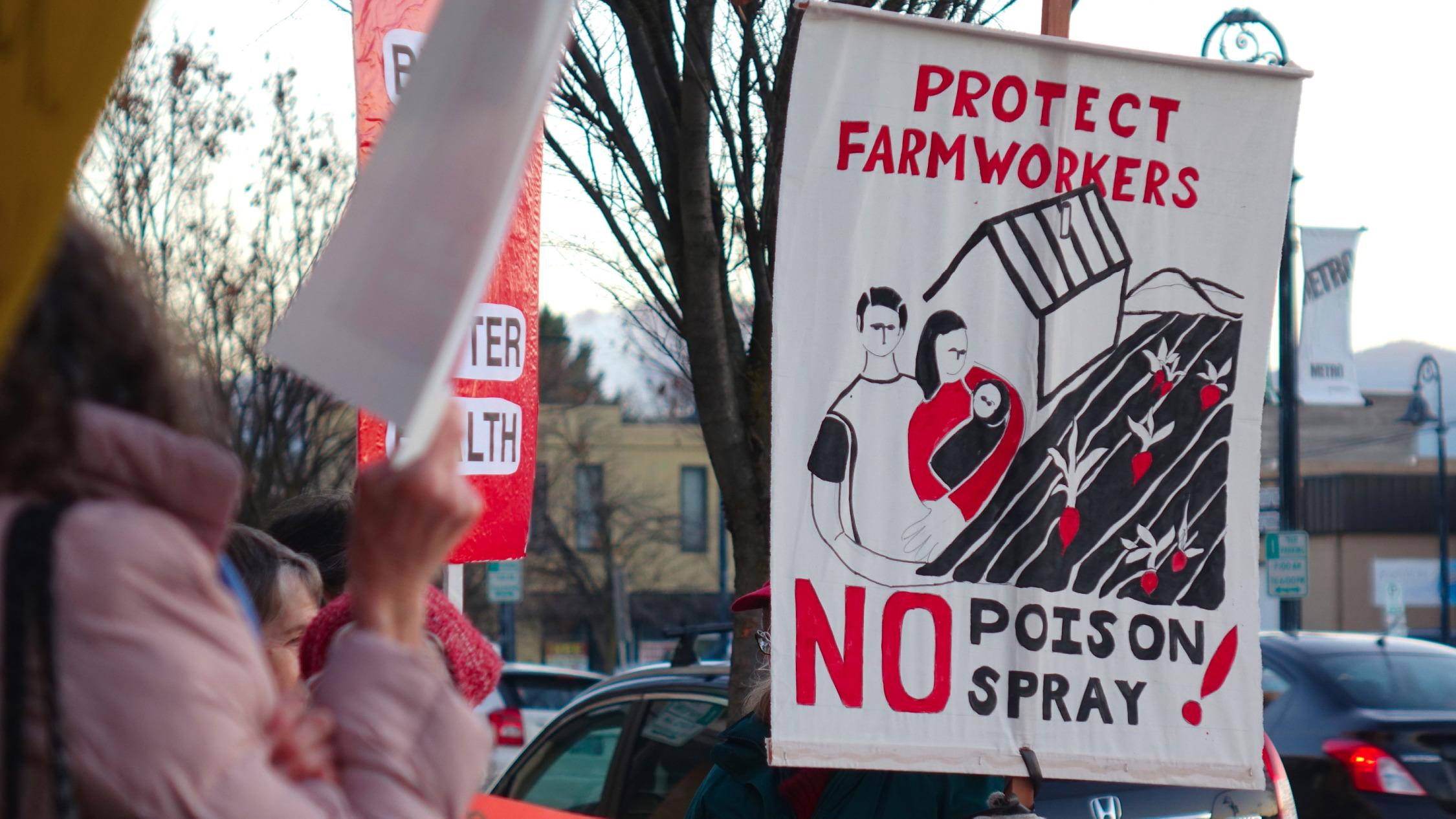
Advocates at a protest in Medford say new Oregon OSHA rules won't protect farmworkers.
Jes Burns / OPB/EarthFix
Washington adopted new federal rules Wednesday that establish protections for farmworkers working with and around pesticides.
They bringing state regulations in line with new federal Environmental Protection Agency guidelines.
The state has been trying to navigate ambiguity around the status of the EPA rules. Hector Castro of the Washington Department of Agriculture says they acted after learning the federal regulations would take effect next month.
“I think for our growers, really all they wanted to see was some certainty about what the next steps were going to be, and what the plans were moving forward, ” he said.
Some of Washington’s rules were already strong enough, but regulators updated others. One change increases the frequency of required pesticide training from every five years to once a year.
This was the major concern of the Washington State Tree Fruit Association.
“We want to make sure that there is ample time and training sessions available for our members and their employees,” the association’s Ranie Haas wrote in an email.
Related: Protecting Farmworkers From Pesticides By Sheltering Them Indoors Draws Skepticism
Another rule change will keep workers 100 feet away from active pesticide spraying.
Oregon is considering an alternative to this that would allow farmworkers to take shelter in nearby structures or housing instead of evacuating 100 feet. Worker advocates in Oregon are opposing this rule, and calling for a 300 foot buffer.
The federal rules do not address pesticides around worker housing. And neither do the regulations adopted by Washington. Although, in public comment, farmworker legal advocates Columbia Legal Services had asked for a quarter mile buffer between housing and pesticide applications.
Worker groups point to spray buffers in place to protect salmon streams (300 feet for aerial sprays) and other agricultural crops (one mile for vineyards in Washington). They say regulators should be as least as protective for humans.

